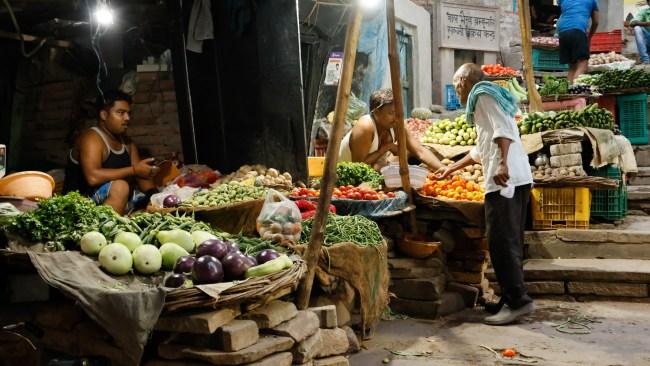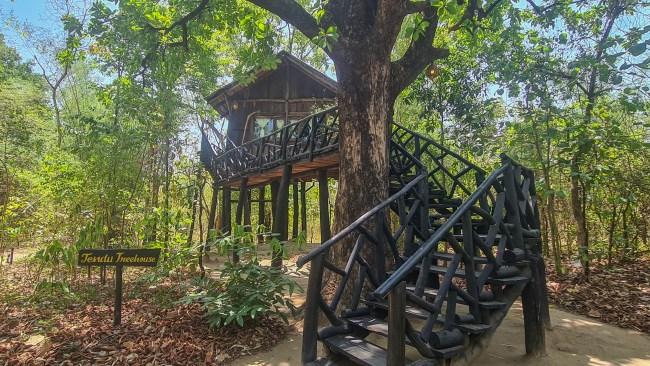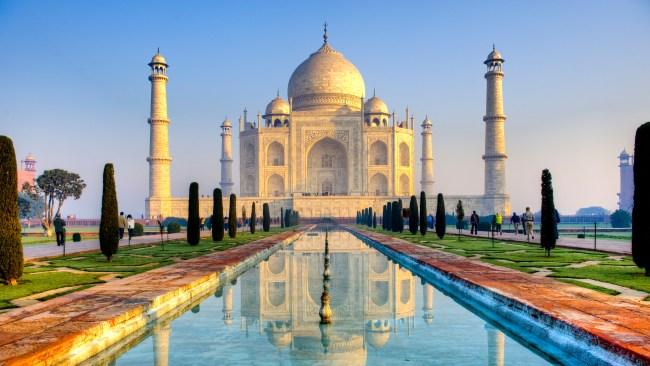No.1 rule of walking on the street in India
A journey through India will reveal a bewildering tapestry of history, culture, wilderness and spirituality.

Lifestyle
Don't miss out on the headlines from Lifestyle. Followed categories will be added to My News.
As the cow meandered towards me I felt slightly panicked about where to go to escape its route along the metre-wide street. There was a boarded-up tea shop across from me, a wall adorned with remnants of paintings of the Hindu god Brahma the creator behind me. With my back pressed against the dirt-caked wall, I held my breath, trying to become as thin as possible. Large horns loomed ever closer and the cow calmly scraped past me, hoofs unfailing on the uneven ground as it continued down the narrow stone street. This, I learnt, would be a common occurrence when wandering the streets of India.
India is a land of vibrant colours, intricate traditions and captivating history. It’s a tapestry of contrasts and sensory delights, pulsating with life and brimming with vivid contradictions. From its raw and untamed natural beauty to the chaotic symphony of its bustling streets, every corner is a kaleidoscope of sights, sounds, and smells that are bewildering and enchanting at the same time. This was never more so than when I arrived in Varanasi, on the banks of the Ganges in the country’s north.
Mysticism meets serenity
After watching an episode in the National Geographic series Tales by Light that featured Hindu holy cleansing and cremation rituals at Varanasi’s burning ghats, I was so intrigued I wanted to see for myself. It’s sensitive, so I wanted a local guide to help me navigate the cultural intricacies and visit respectfully. When I discovered Intrepid Travel’s Varanasi Homestay tour, I knew I’d be with a company and local guide that would follow the ethos of travel I have become accustomed to.
When I arrived in Varanasi, local Intrepid guide Gouraang Gupta welcomed me at the traditional homestay of Mr Pankaj Nair.
“Welcome to the city of lights, the city of temples, the city of narrow alleys, the city of spirituality, the city of whatever it is you see out there,” Gouraang said, getting me settled in my accommodation before we headed out to explore.
Varanasi is not for the faint of heart. Never have I experienced a city so raw and confronting, yet one that ignited my curiosity and wonderment so much. Set on the sacred Ganges River, Varanasi beckoned me with its timeless allure. Steeped in history and mythology, it captivates the soul.

Known as the spiritual capital of India, it’s a labyrinth of narrow alleyways, centuries-old temples, and vibrant ghats (ceremonial steps) that teem with life, death and devotion.
As I wandered the winding lanes, the air was thick with the fragrance of incense and sounds of chanting priests. Gouraang explains that Varanasi dates back thousands of years, and its role as a centre of learning and spirituality has attracted seekers and scholars from across the globe.
At sunrise, the Ganges comes alive as pilgrims flock to the ghats to perform sacred rituals and immerse themselves in the holy waters. The water shimmered with the soft hues of the rising sun, while temple bells and the melodic prayer chants combined to create a mesmerising harmony. As dusk fell, the river was a spectacle of light and spirituality, with the enchanting Ganga Aarti ceremony illuminating the banks and casting an ethereal glow on the faces of the devout.
Varanasi is more than just a city; it is a sanctuary for the soul. It is a place where time seems to stand still, where ancient traditions blend seamlessly with the rhythm of everyday life. Escaping the streets of Varanasi, it was time to venture into India’s natural wilderness in search of wildlife of a different kind.

Tiger tails and jungle trails
Who would have thought the striking markings of a Bengal tiger would camouflage so well in the jungle? Yet here I was peering through the binoculars still unable to spot the tiger.
“Look just beyond that tree stump, hidden in the tall grass, and you can see the stripes,” says Pugdundee Safaris naturalist Ashish Tirkey, who had taken me into Bandhavgarh National Park.
But I didn’t need to squint through the binoculars much longer as the tiger got up and revealed herself, stretching before walking straight towards us.
As she elegantly made her way down from her hiding spot into the open and across a small creek, it became apparent she was not alone. Four cubs emerged from their jungle hiding spot and followed her path, getting closer to us by the minute. The tigers paused as if posing for photographs before slinking out of sight into the jungle.

In the heart of India, in the Vindhya Hills of Madhya Pradesh, Bandhavgarh National Park’s rugged terrain and diverse flora creates the perfect habitat for tigers. It is known to have the world’s highest density of Bengal tigers and is where the BBC filmed the “Tiger”episode of the Dynasties documentary series.
Beyond the tigers, there are more than 22 species of mammals and 250 species of birds in the area. An afternoon game drive had me gazing at spotted deer, wild boar, Asiatic jackal, grey mongoose, crested serpent eagles, black vultures and numerous peacocks. I am told there are also leopards and sloth bears in the park but both eluded me.
Retreating from the simmering summer sun, it was time to head back to the Tree House Hideaway, which is also operated by the safari company, where I was relieved to be handed a glass of salted lemon water to quench my thirst. Escaping to my private jungle hideaway, I continued to watch wildlife from the shade of my elevated treehouse balcony.
Satisfied with my tiger and wildlife experiences at Bandhavgarh National Park, it was time to head back to the chaotic Indian streets again, this time to view one of the modern Seven Wonders of the World, the Taj Mahal.

A grand love story
A four-hour journey south of Delhi you find the once capital of the Mughal Empire, Agra. Here, on the bank of the Yamuna River, is the Taj Mahal, the last stop on my Indian adventure.
Waking at 4.30am was only made easy by the thought of witnessing the sun rise over the famous structure. I soon discovered the early-morning arrival also blessed me with a rare solitude, only a handful of other eager sightseers joining me, which made passing through security a quick affair.
As I caught my first glimpse of the Taj Mahal, I gasped at its marble silhouette in the dawn light. By the time I made my way to the bench where the late Princess Diana famously posed for a photo in 1992, the sun had begun rising and the colours began to change. Blue in the darkness of morning’s break, the Taj Mahal began to glow a soft pastel pink.
I was embarrassed to tell my Intrepid guide Mohsin that I had no idea of the Taj Mahal’s story. Lucky for me, Mohsin had been working with Intrepid Travel for 17 years and was incredibly knowledgeable, filling in all the gaps.

“The Taj Mahal is an architectural masterpiece that epitomises eternal love,” Mohsin began as we wandered through the perfectly manicured gardens.
“Built in the 17th century by Emperor Shah Jahan, it is a tribute to his beloved wife, Mumtaz Mahal. Legend has it that Shah Jahan was struck by grief after the untimely death of Mumtaz, vowing to immortalise their love in the form of a mausoleum. The Taj Mahal, with its intricate details and symmetrical beauty, stands as a testament to his undying love for his queen.”
I traced the story through the marble inlays and delicate calligraphy, each telling a chapter of their fabled romance. Captivated by the sheer grandeur of the structure, I marvelled at its white domes and soaring minarets reflecting the ever-changing hues of the sun.
Ending my time in India at the Taj Mahal with the rising sun was a privilege that left an indelible mark on my soul. It was a fleeting moment of tranquillity, such a contrast to my other experiences in India – sometimes intolerable, insatiable and overall, incredible.
The writer travelled as a guest of Intrepid Travel and Pugdundee Safaris.
Originally published as No.1 rule of walking on the street in India




